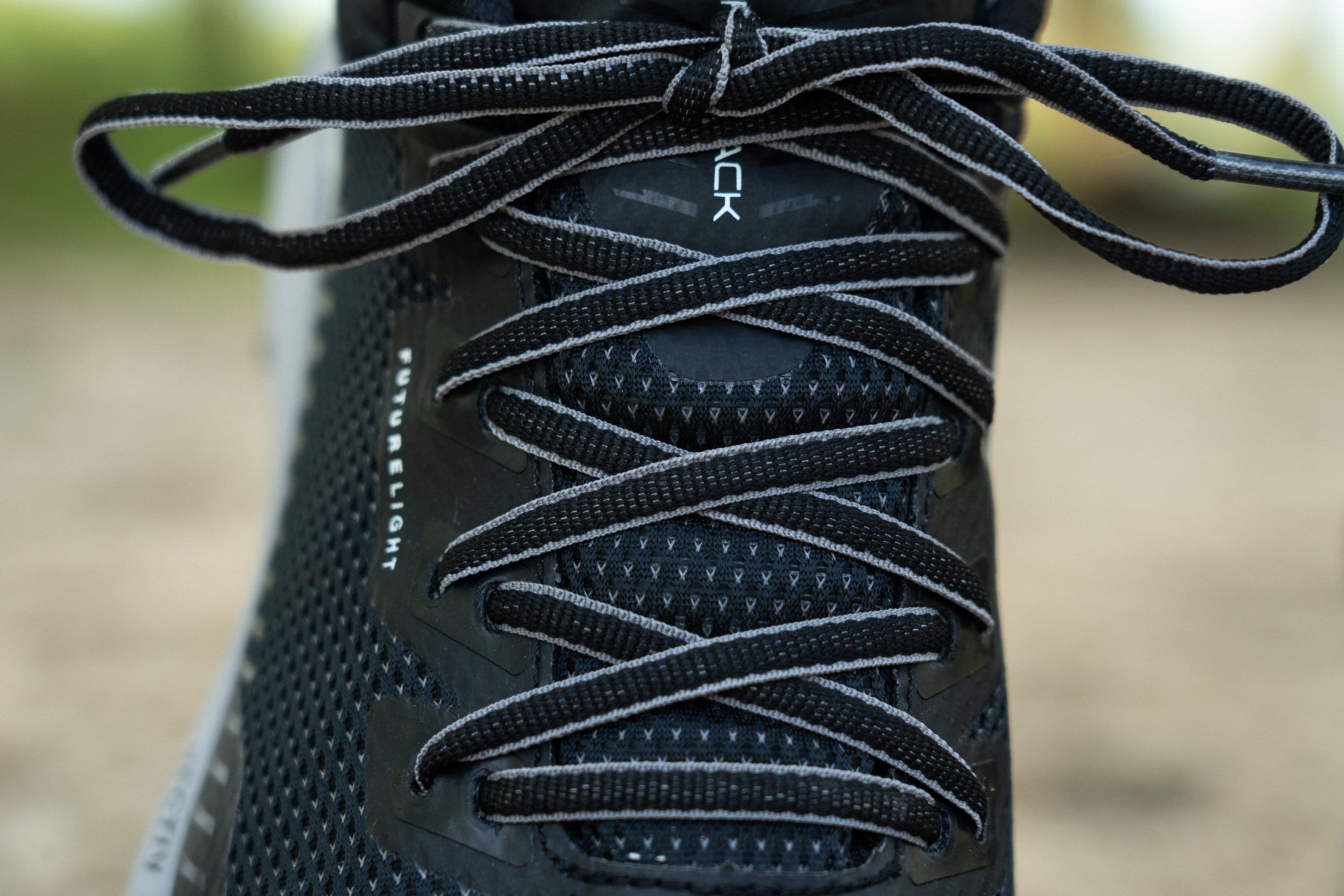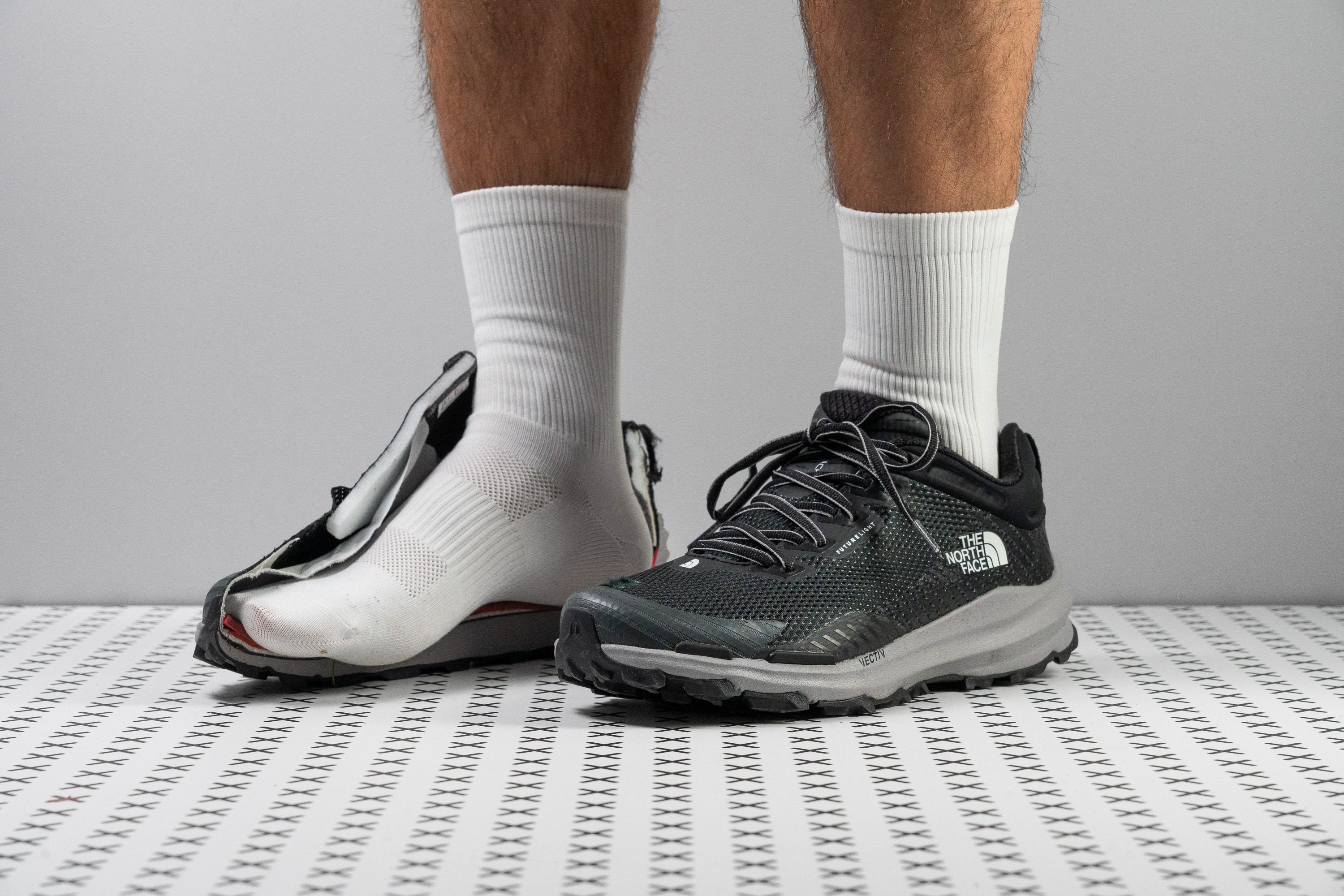Our verdict
Pros
- Vectiv provides a smooth ride
- Reliable impact protection
- Notably lighter than average
- Excellent grip on various surfaces
- Stable platform for uneven terrain
- Flexible forefoot bends with the foot
- Effective waterproofing
- Midsole doesn't get firm in cold
- Comfortable in-shoe feel
Cons
- Not very durable
- Not for wide feet
- Expected better energy return
Audience verdict
- Top 23% in hiking shoes
- Top 1% in The North Face hiking shoes
Comparison
The most similar hiking shoes compared
+ + Add a shoe | |||||
|---|---|---|---|---|---|
| Audience score | 88 Great! | 82 Good! | 80 Good! | 80 Good! | |
| Price | $150 | $190 | $200 | $160 | |
| Trail terrain | ModerateTechnical | Light | LightModerate | Technical | |
| Weight lab Weight brand | 11.6 oz / 329g 11.4 oz / 323g | 12 oz / 339g | 14.4 oz / 408g 16.7 oz / 473g | 13.3 oz / 378g 13.3 oz / 378g | |
| Lightweight | ✓ | ✓ | ✗ | ✓ | |
| Breathability | Warm | Warm | Warm | Warm | |
| Use | Day HikingSpeed HikingLight Hiking | Day HikingSpeed HikingLight HikingUrban hiking | Day HikingSpeed HikingLight Hiking | BackpackingDay HikingSpeed HikingSnow | |
| Orthotic friendly | ✓ | ✓ | ✓ | ✓ | |
| Drop lab | 8.9 mm | 10.2 mm | 1.5 mm | 10.9 mm | |
| Size | True to size | True to size | Half size small | True to size | |
| Midsole softness | Balanced | Firm | Soft | Firm | |
| Difference in midsole softness in cold | Small | Normal | Big | Big | |
| Torsional rigidity | Stiff | Stiff | Stiff | Stiff | |
| Heel counter stiffness | Flexible | Moderate | Moderate | Stiff | |
| Stiffness | Flexible | Stiff | Stiff | Moderate | |
| Outsole hardness | Average | Hard | Average | Hard | |
| Waterproofing | Waterproof | Waterproof | Waterproof | Waterproof | |
| Material | Mesh | - | Leather | - | |
| Season | Winter | Winter | Winter | Winter | |
| Toebox durability | Decent | Decent | Good | - | |
| Heel padding durability | Decent | Bad | Bad | - | |
| Outsole durability | Decent | Good | Good | - | |
| Width / fit | Medium | Medium | Wide | Medium | |
| Toebox width | Medium | Medium | Wide | Medium | |
| Lug depth | 3.5 mm | 2.3 mm | 3.2 mm | 4.5 mm | |
| Heel stack lab | 33.5 mm | 39.4 mm | 31.0 mm | 30.9 mm | |
| Forefoot | 24.6 mm | 29.2 mm | 29.5 mm | 20.0 mm | |
| Widths available | Normal | Normal | Normal | NormalWide | |
| Technology | Ortholite | - | Gore-TexVibram | Gore-TexOrtholite | |
| Heel tab | Finger loop | Finger loop | Finger loop | Finger loop | |
| Removable insole | ✓ | ✓ | ✓ | ✓ | |
| Ranking | #8 Top 23% | #24 Bottom 31% | #28 Bottom 20% | #27 Bottom 22% | |
| Popularity | #15 Top 43% | #17 Top 49% | #3 Top 9% | #5 Top 15% |
Who should buy
We think you should give the Vectiv Fastpack Futurelight a chance if:
- you are after a nimble hiking shoe for your quick-paced hikes or fastpacking adventures
- you want a shoe with a versatile grip for various types of terrain
- you need a lightweight yet waterproof hiker
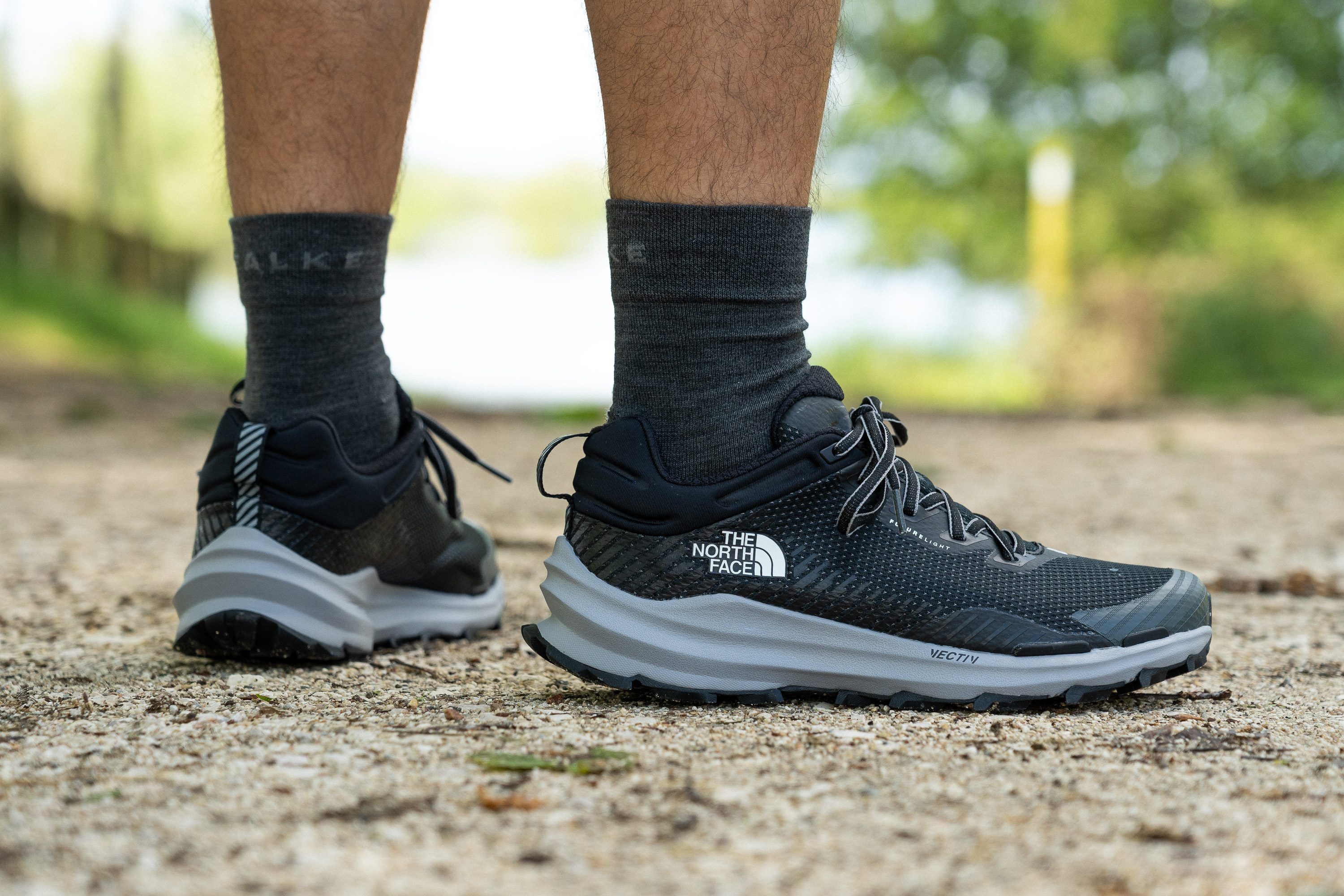
Who should NOT buy
The North Face certainly had to cut corners on durability and protection to keep the Fastpack so light and agile. But if you don't mind extra weight in return for a better-reinforced shoe, you may prefer the Salomon X Ultra 4 GTX or the Adidas Terrex Swift R3 GTX instead.
And if waterproofing is not a must, you might as well consider the Merrell Moab Speed 2 or the Salomon Outpulse.
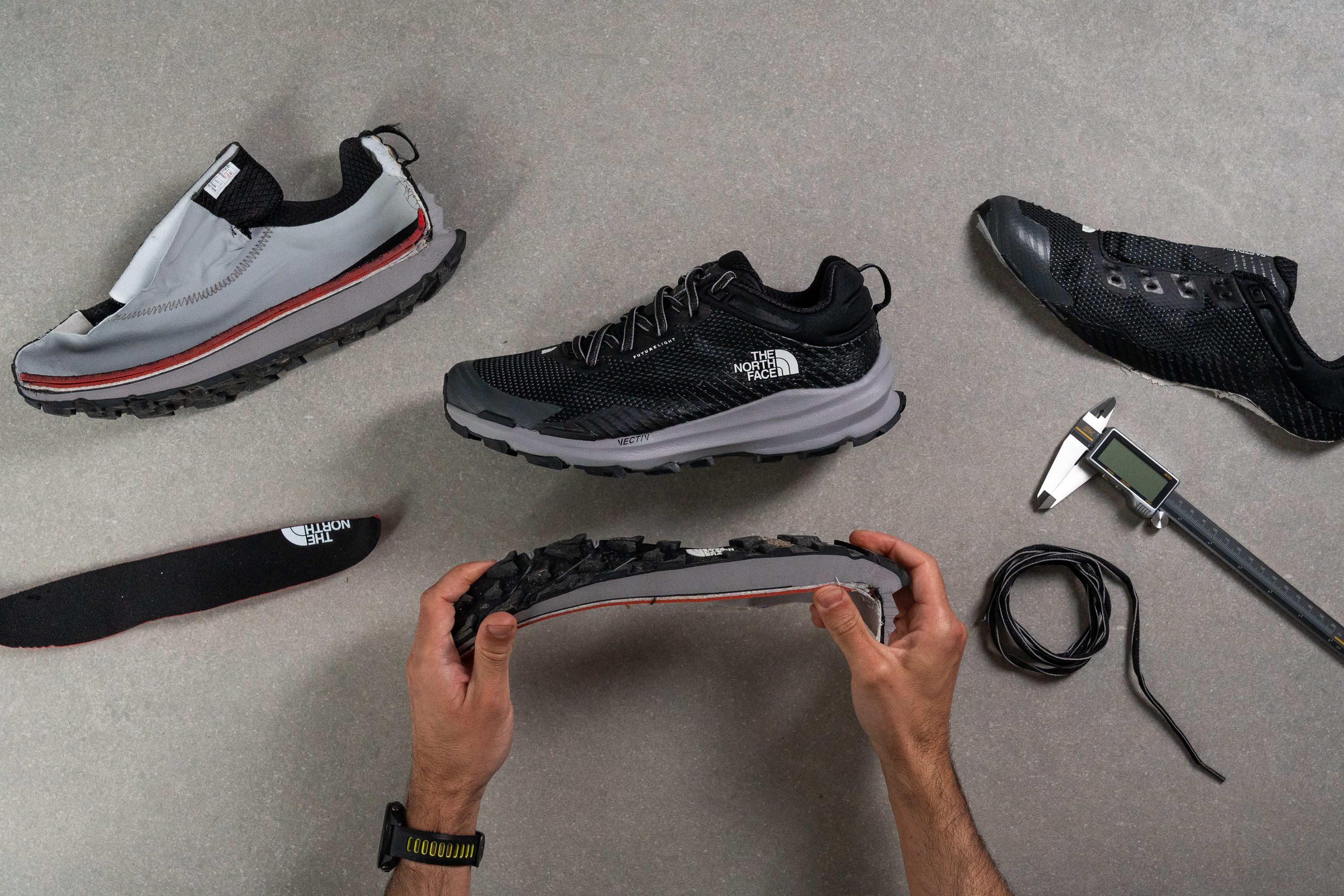
Cushioning
Shock absorption
The Vectiv Fastpack Futurelight is very effective at protecting the feet and joints from the impact forces, making it a great choice for long hikes.
With an above-average shock absorption of 109 SA, it helps to reduce fatigue and makes hiking less taxing on the body.
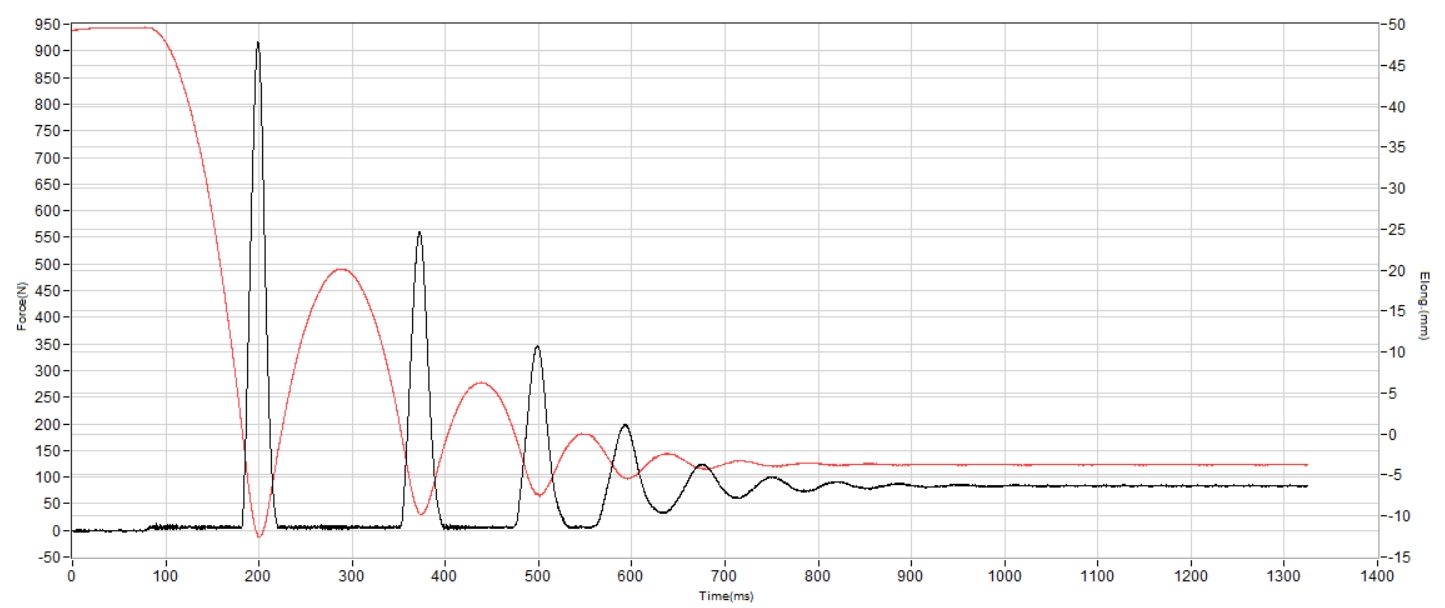
| Vectiv Fastpack Futurelight | 109 SA |
| Average | 104 SA |
Energy return
With a top-loaded TPU plate and a superfoam in its midsole, we expected a much greater energy return from this TNF shoe. However, our machine recorded a very moderate reading of 48% which is even less than we got in hiking shoes with no special rebound technologies!
This is disappointing given the shoe's purpose as a nimble fastpacking shoe.
| Vectiv Fastpack Futurelight | 48.1% |
| Average | 50.2% |
Heel stack
The Vectiv Fastpack is not exactly a max-cushioned shoe but we found that the extra few millimeters of stack height made it feel notably cushier underfoot.
Clocking in at 33.5 mm in the heel, it offers a perfect balance of shock absorption and ground feel. We got the benefit of less tired feet without losing control of our foot placement on the more technical patches.
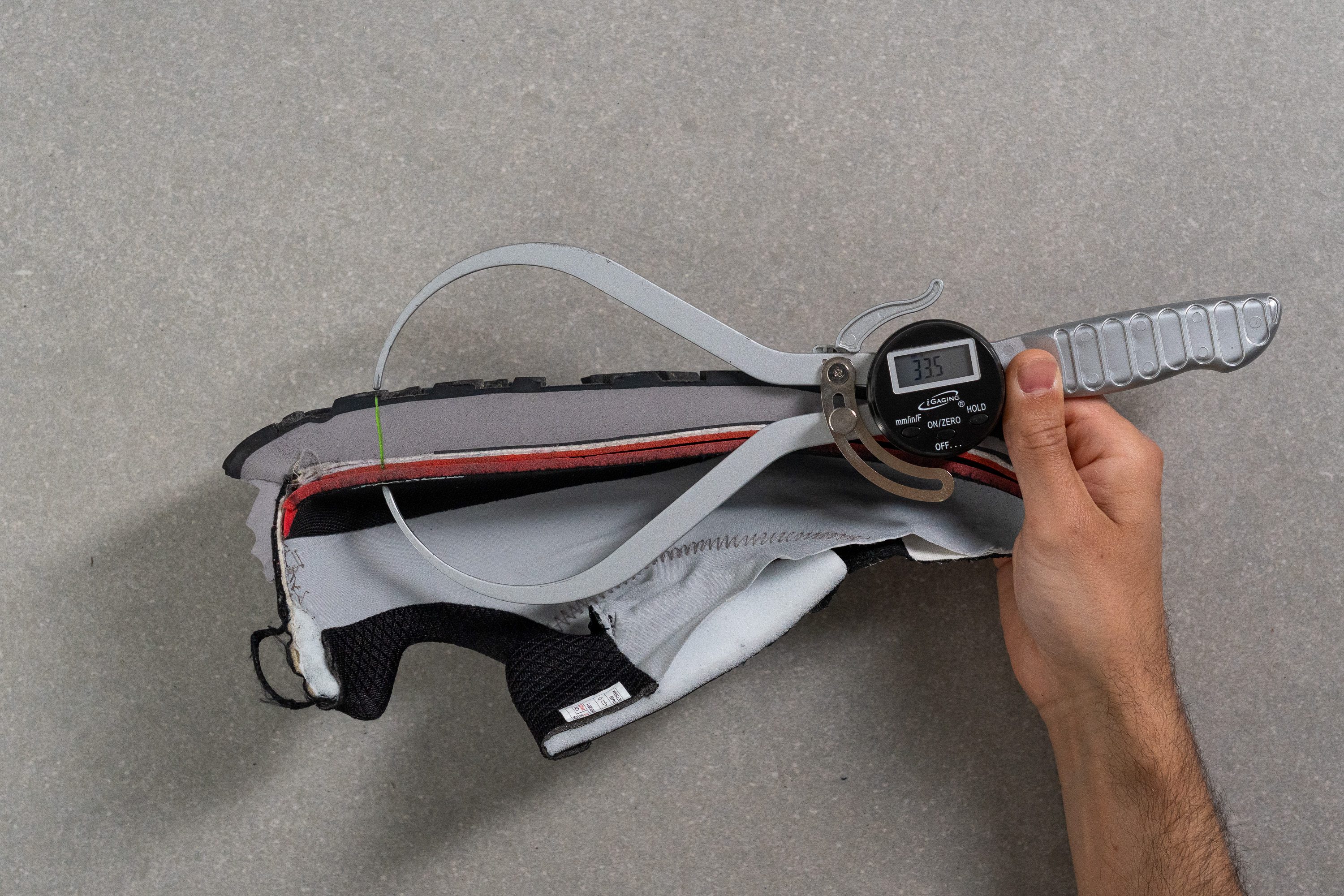
| Vectiv Fastpack Futurelight | 33.5 mm |
| Average | 32.8 mm |
Forefoot stack
The shoe's added cushioning is particularly pronounced in the forefoot where our caliper recorded 24.6 mm.
This is an above-average measurement for a hiking shoe and is reflected in better impact protection under the toe joints and the ball of the foot.
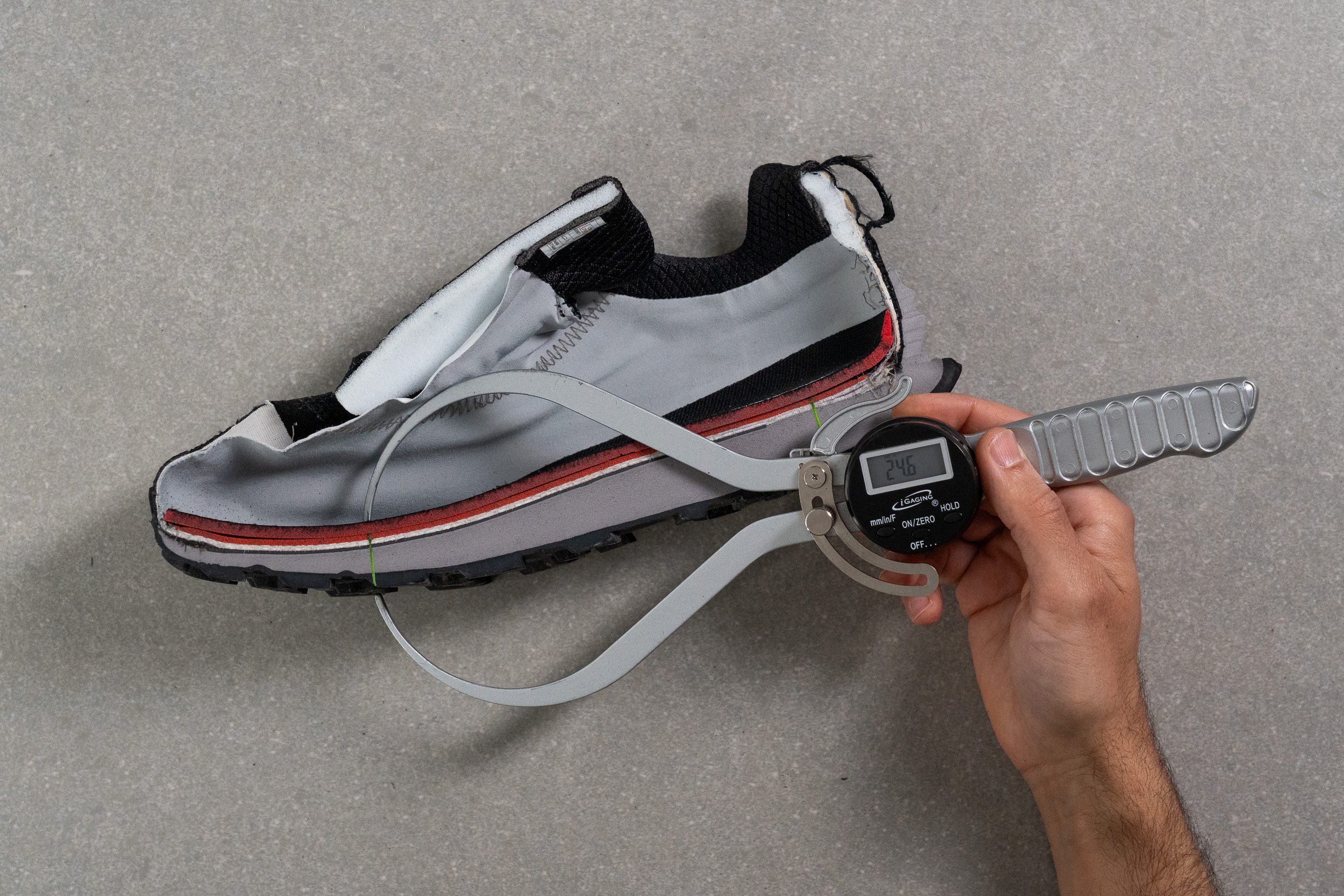
| Vectiv Fastpack Futurelight | 24.6 mm |
| Average | 22.0 mm |
Drop
As our stack measurements show, the heel of the Fastpack is 8.9 mm thicker than the forefoot. This means that the wearer's heel is slightly elevated above the toes taking some load off the feet, Achilles, and calves and shifting it up the knees and hips.
Most hikers should feel right at home with this setup as it falls within the standard range of both hiking shoes and casual sneakers and is considered optimal for long hours of walking. Especially when you carry additional weight behind your back.

| Vectiv Fastpack Futurelight | 8.9 mm |
| Average | 10.7 mm |
Midsole softness
With a durometer reading of 24.5 HA, the shoe's midsole is only slightly softer than average. It doesn't make it to the plush category (20 HA or less) but is also far from the firm bunch (30 HA or more).
It is a perfectly balanced setup that is optimal for traversing uneven terrain with a welcome touch of underfoot softness.

| Vectiv Fastpack Futurelight | 24.5 HA |
| Average | 27.0 HA |
Rocker
Originally designed for trail running, the brand's proprietary Vectiv technology makes the Fastpack feel a lot like a trail running shoe. We felt as if it encouraged us to go faster with its curved rocker geometry and a large 3D plate.
And even though the rocker angle of this shoe is not the most pronounced, it works in tandem with the heel bevel to provide very smooth and effortless heel-to-toe transitions.
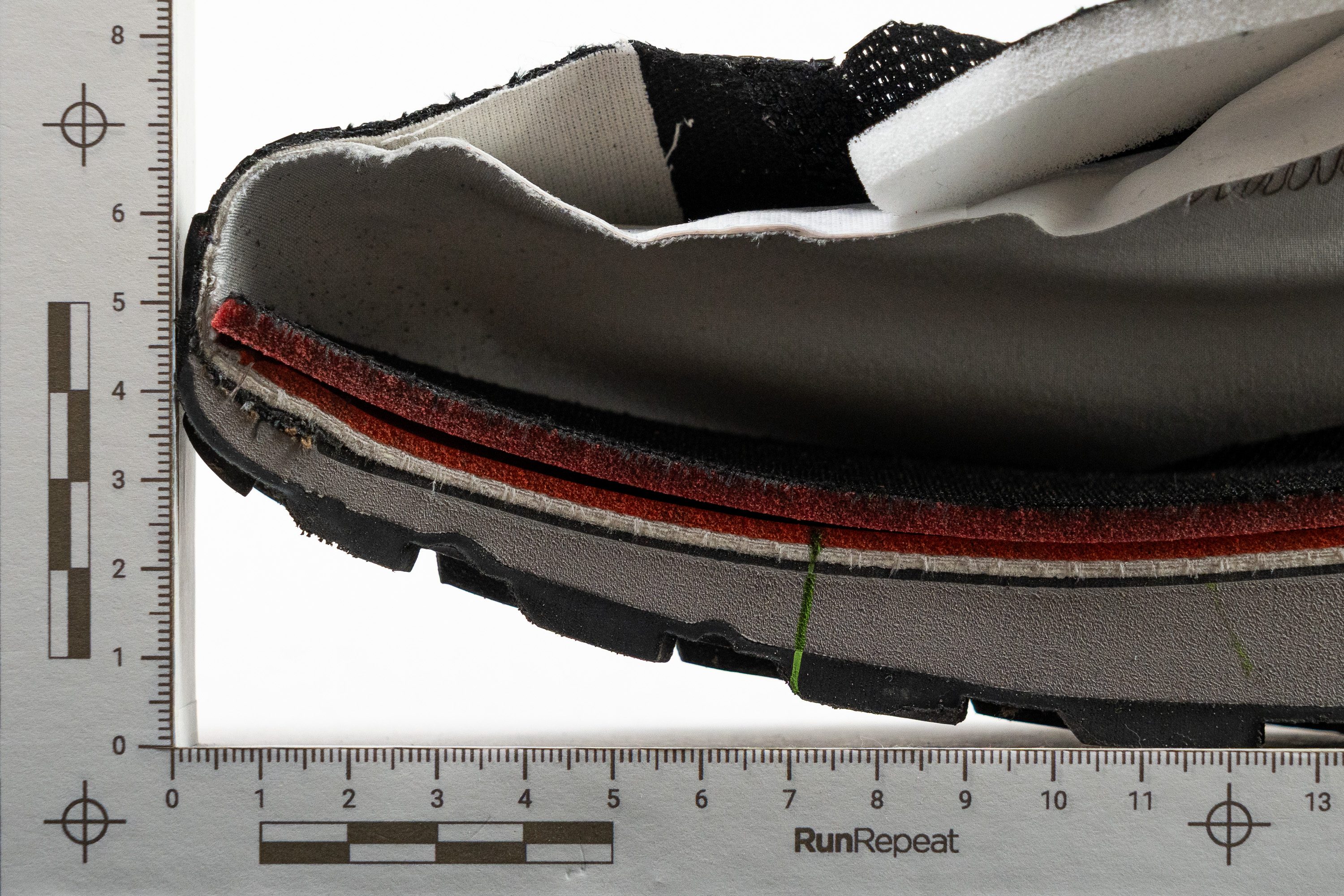
Plate
The North Face equipped the Fastpack with a large TPU plate that takes up 2/3 of the shoe's length! It is responsible for making our toe-offs notably snappier and contributed to the Fasctpack's stable ride.
This is a perfect combo for someone who enjoys tackling their hikes at a faster pace and with a lighter backpack.
Additionally, the plate works as rock protection which is essential on rocky terrain.
Size and fit
Size
The North Face Vectiv Fastpack Futurelight fits true to size (13 votes).
Width / Fit
The Vectiv Fastpack Futurelight has a streamlined silhouette which makes it look quite slim. But is that so? We created a 1-to-1 replica of the shoe's interiors with the help of gel.
Measuring the widest part of the mold, our caliper recorded 94.1 mm which is a standard reading for a medium-width hiking shoe in a men's US size 9.
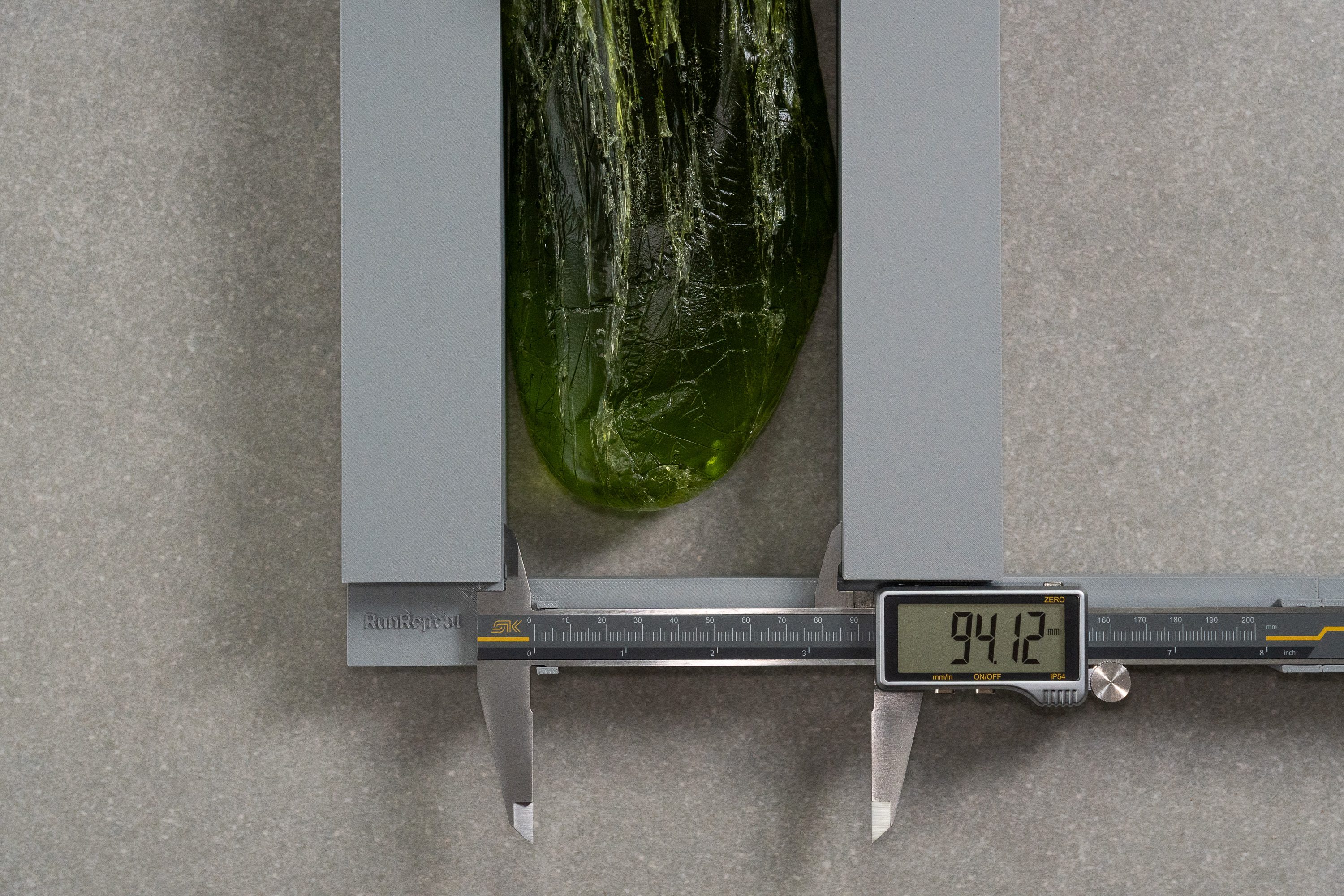
| Vectiv Fastpack Futurelight | 94.1 mm |
| Average | 94.1 mm |
Toebox width
But as you can see from the shape of the mold, the shoe has some tapering towards the front.
We took our second measurement at the big toe and found that it does get a tad bit narrower than average at 70.6 mm. This comes close to the narrow range but shouldn't be a point of concern for someone with medium feet.
If you are prone to toe swelling or have wide feet, the Merrell Moab Speed 2 could be a more accommodating option.

| Vectiv Fastpack Futurelight | 70.6 mm |
| Average | 72.5 mm |
Toebox height
The shoe's below-average toebox height of 25.0 mm also contributes to the Fastpack's streamlined appearance.
It's not critically low but if you have deformities like hammer (or claw) toes, black toenails, or ingrown toenails, you may need a shoe with more vertical space.

| Vectiv Fastpack Futurelight | 25.0 mm |
| Average | 28.0 mm |
Traction / Grip
Forefoot traction
When it comes to smooth and wet rocks, the TNF's proprietary SurfaceCTRL rubber proved to be on par with the category average. Measuring its dynamic friction coefficient on wet concrete, we recorded a regular measurement of 0.29.
While it's not the tackiest outsole, it's safe enough for some boulder hopping.
| Vectiv Fastpack Futurelight |
Lug depth
Even though our caliper measured the shoe's lug depth at 3.5 mm instead of the promised 4 mm, it is not a big difference in terms of performance.
This treading is deep enough to bite into light mud but is not too toothy to make it uncomfortable on hard-packed terrain or boulders.

| Vectiv Fastpack Futurelight | 3.5 mm |
| Average | 4.0 mm |
Outsole design
The Fastpack's outsole is studded with lugs of various shapes and sizes to grip different types of terrain - soft muddy or grassy patches, mossy logs, loose rock, and even wet boulders, and slick rocky creek beds.
In the forefoot, the shoe's treads are facing front and in the rearfoot, they face the opposite direction to provide braking power upon descents.
In other words, the Fastpack provided some of the most confident and surefooted outsole setups we've tested!
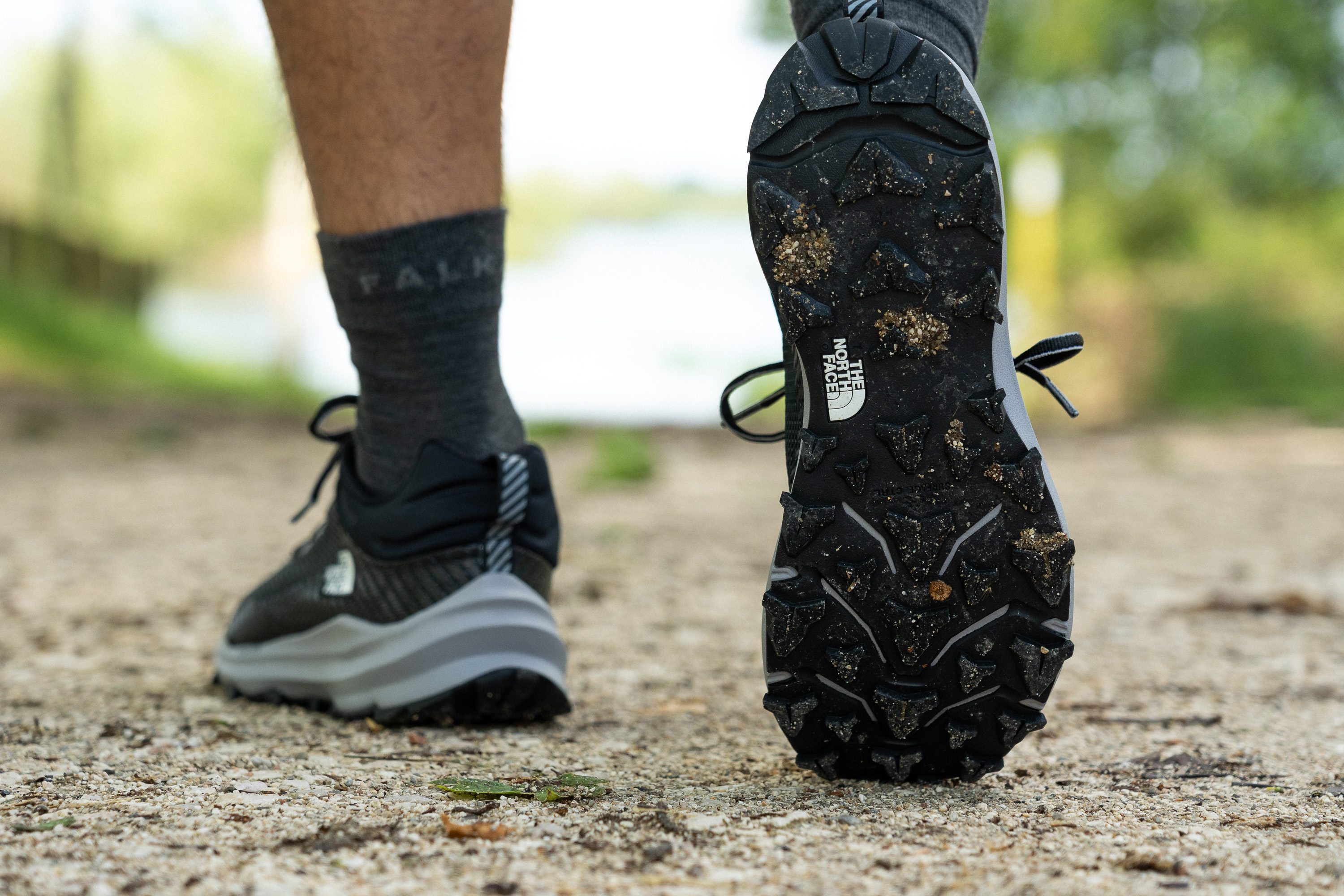
Flexibility / Stiffness
To our great surprise, the shoe's stiff TPU plate didn't seem to affect the shoe's forefoot flexibility that much!
Fixing the shoe to our flexibility tester, we found that it needed only 14.5N of force to bend by 30 degrees. This is less than it takes an average hiking shoe and is yet another bonus for technical terrain. That pliability helped us feel the ground and make foot placement decisions on and between the rocks.
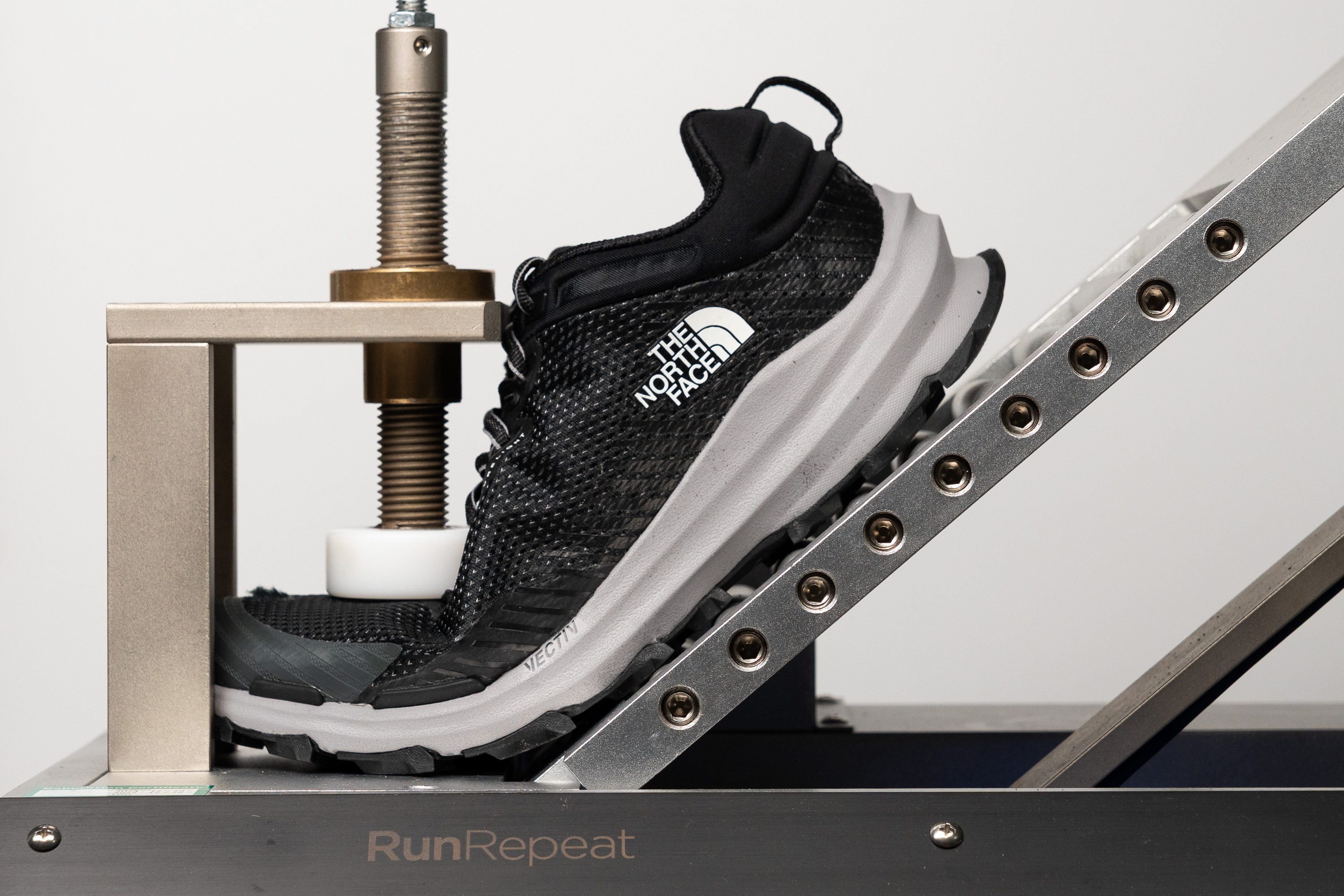
| Vectiv Fastpack Futurelight | 14.5N |
| Average | 18.3N |
Weight
Its athletic running-shoe-like design makes The North Face Vectiv Fastpack Futurelight one of the lightest hiking shoes on our roster.
Tipping the scale at 11.6 oz (329g), it proved to be light both on foot and on paper. For context, the shoe weighs the same as the Merrell Speed shoes which are also designed for quick-paced backcountry adventures.
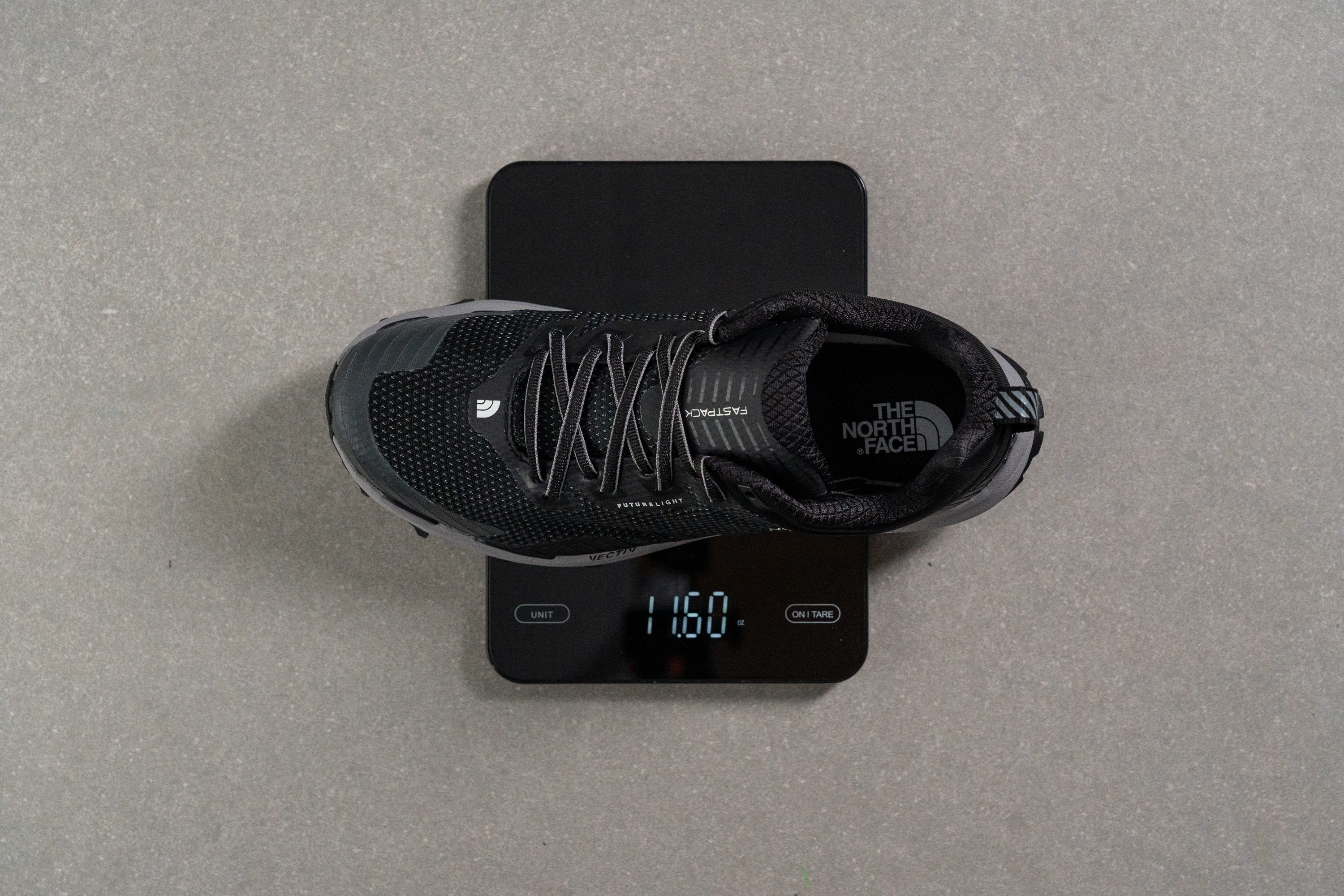
| Vectiv Fastpack Futurelight | 11.6 oz (329g) |
| Average | 13.4 oz (380g) |
Breathability
Unlike most other hiking shoes that feature a Gore-Tex membrane for waterproofing, the Fastpack relies on The North Face's proprietary Futurelight material.

Even though it is claimed to 'allow air' and 'keep you cooler,' we found it to be just as warm as all the GTX shoes we've tested.
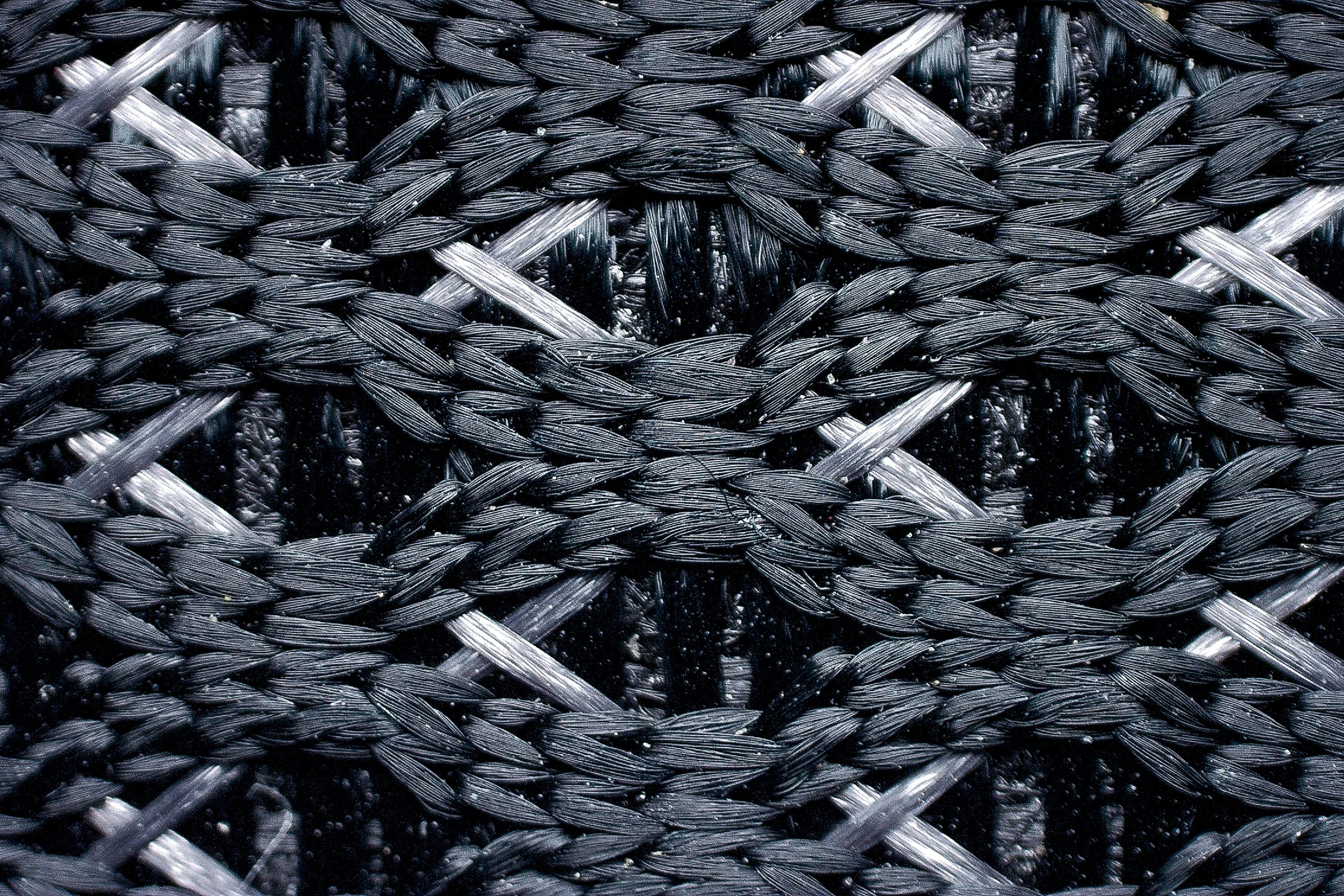
You can see zero smoke passing through its textile in our breathability test below earning the Fastpack the lowest breathability score of 1/5.
Because of that, we recommend choosing this shoe for temperatures below 68°F (20°C) and wet conditions (frequent rains, stream and river crossings, etc.). And if you need a shoe for summertime, have a look at breathable hiking shoes because the TNF Fastpack is only available in a waterproof version.
| Vectiv Fastpack Futurelight | 1 |
| Average | 2.4 |
Stability
Lateral stability test
We were pleasantly surprised by the amount of stability this lightweight shoe offers.
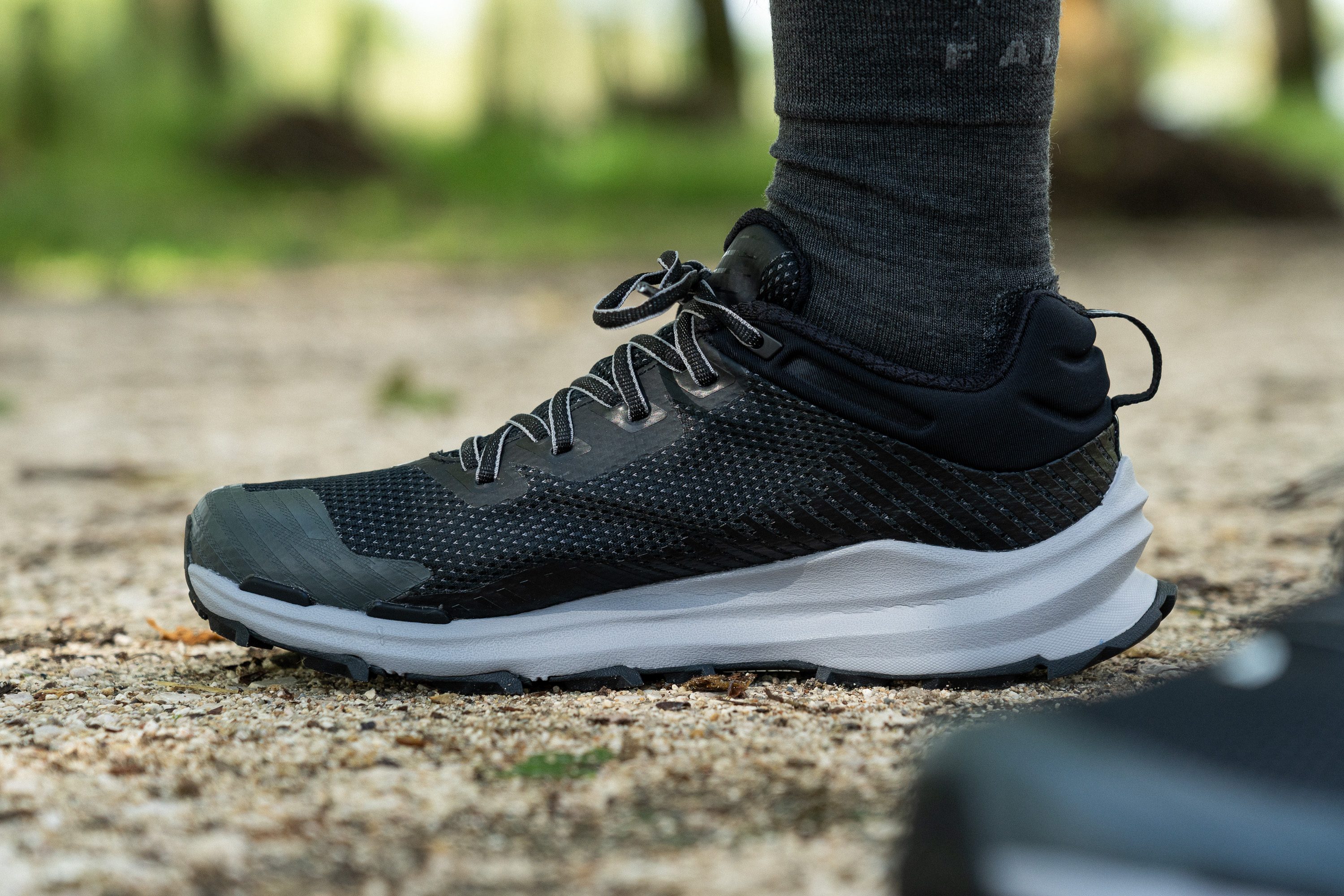
Part of it comes from the internal TPU plate and another part is provided by the external foam carrier which forms a cradle around the heel and the sides of the foot.
Torsional rigidity
The technologies mentioned above generate a great deal of stiffness which doesn't let the shoe twist so easily and keeps the foot aligned on even terrain. It is also beneficial for tackling long distances as your foot muscles don't have to work overtime to balance and stabilize the body.
You can see how unforgiving the Fastpack is in our manual test below. Without a doubt, it deserves a maximum stiffness score of 5/5.
| Vectiv Fastpack Futurelight | 5 |
| Average | 3.7 |
Heel counter stiffness
The shoe's heel counter, on the other hand, is nowhere near as stiff. It takes little effort to bend or fold it resulting in a low stiffness score of 2/5.
However, this is not necessarily a bad thing.
Sure, you don't get as much ankle support for heavier backpacks but that's not the point of this hiking shoe anyway. It features a molded spandex collar that fits closely to the rearfoot and moves along with it as the foot changes angle on steep ascents and descents. This unrestricted ankle movement contributed to the shoe's overall agile feel.
| Vectiv Fastpack Futurelight | 2 |
| Average | 3.7 |
Midsole width - forefoot
As a more speed-oriented shoe that prioritizes nimble movement on challenging terrain, the TNF Fastpack relies on a slimmer platform.
Measuring the widest part of its midsole in the forefoot, our caliper returned 107.2 mm. This is only a few millimeters narrower than average so not too narrow to compromise stability.

| Vectiv Fastpack Futurelight | 107.2 mm |
| Average | 111.3 mm |
Midsole width - heel
The shoe's heel width also proved to be slightly below the average at 84.5 mm.
We found these midsole dimensions to be optimal for obstacle-laden terrain like scree slopes and talus fields as they helped our foot placement to be more precise and lowered the risk of catching rock edges.
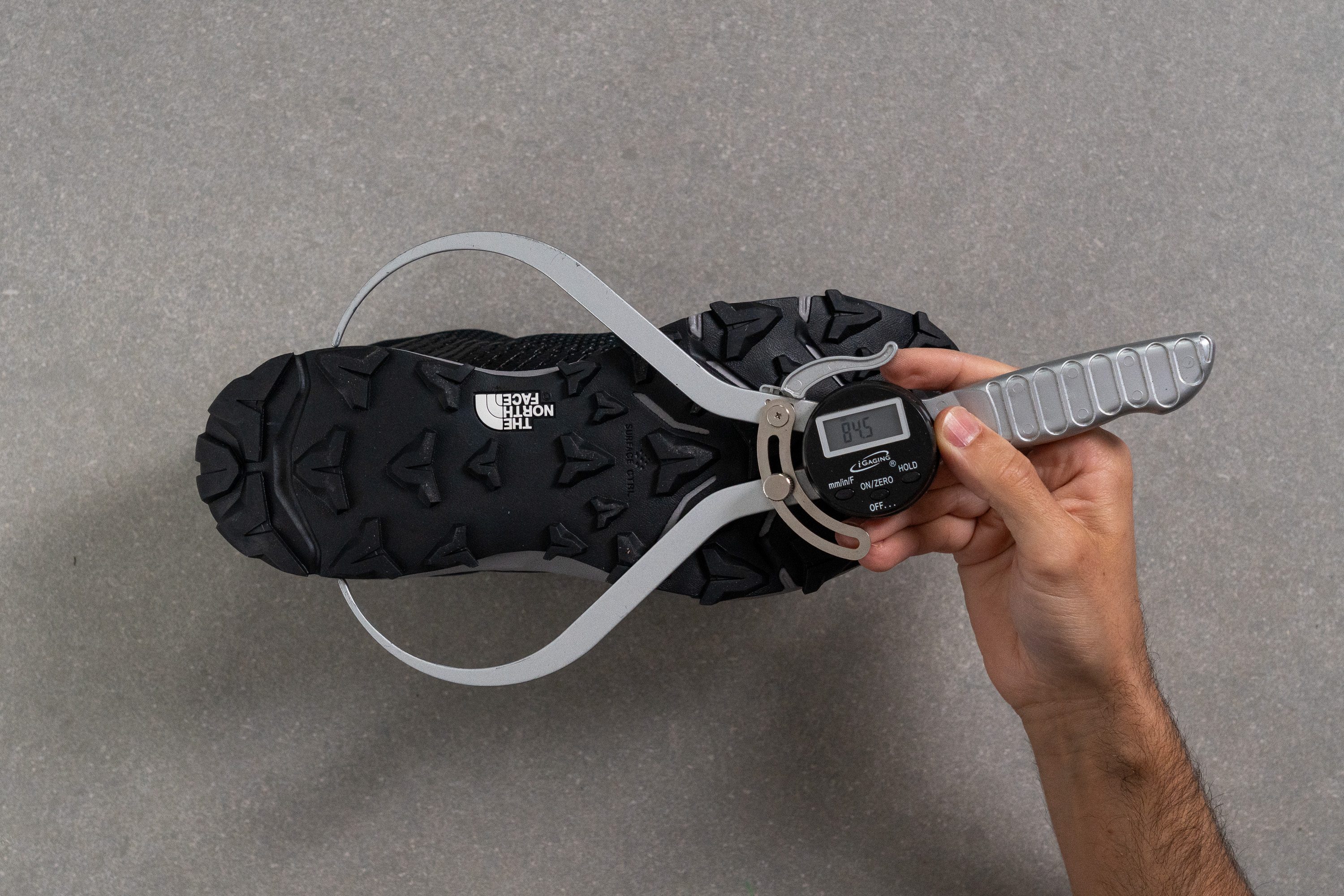
| Vectiv Fastpack Futurelight | 84.5 mm |
| Average | 87.9 mm |
Durability
Toebox durability
With very minimal reinforcements and lots of exposed mesh, the Fastpack is not the most durable option for hiking.
Testing its 'abrasion-resistant mesh' in our Dremel test, we found that it is very easily damaged by sandpaper. Only a few seconds of drilling it at 5K RPM resulted in significant wear which lowered the shoe's toebox durability score to 3/5.
But at least the most vulnerable area of the shoe's toebox is covered with a molded TPU toe cap and a mudguard.

| Vectiv Fastpack Futurelight | 3 |
| Average | 3.7 |
Heel padding durability
A slick synthetic lining inside the shoe proved to be more resistant to abrasion and showed very little wear in our Dremel test. Because of that, it earned a higher durability score of 4/5.
| Vectiv Fastpack Futurelight | 4 |
| Average | 3 |
Outsole durability
Unfortunately, the shoe's outsole didn't show the most promising durability results.
Applying our Dremel to one of the lugs, we saw it chip away by nearly half! Losing 1.3 mm of rubber in 18 seconds is a below-average result as far as hiking shoe outsoles are concerned.
We are worried that the Fastpack will lose its grip sooner than one might hope.
| Vectiv Fastpack Futurelight | 1.3 mm |
| Average | 1.0 mm |
Outsole thickness
Gladly, the shoe's base rubber layer is on par with the average at 2.3 mm (lug depth excluded). This is a decent buffer between the midsole foam and the ground.

| Vectiv Fastpack Futurelight | 2.3 mm |
| Average | 2.5 mm |
Misc
Insole thickness
The shoe's bouncy underfoot experience is enhanced by a high-rebound OrthoLite X55 insole. Even though it's not the thickest footbed at 4.1 mm, it contributes to this TNF shoe's fast and sprightly feel.
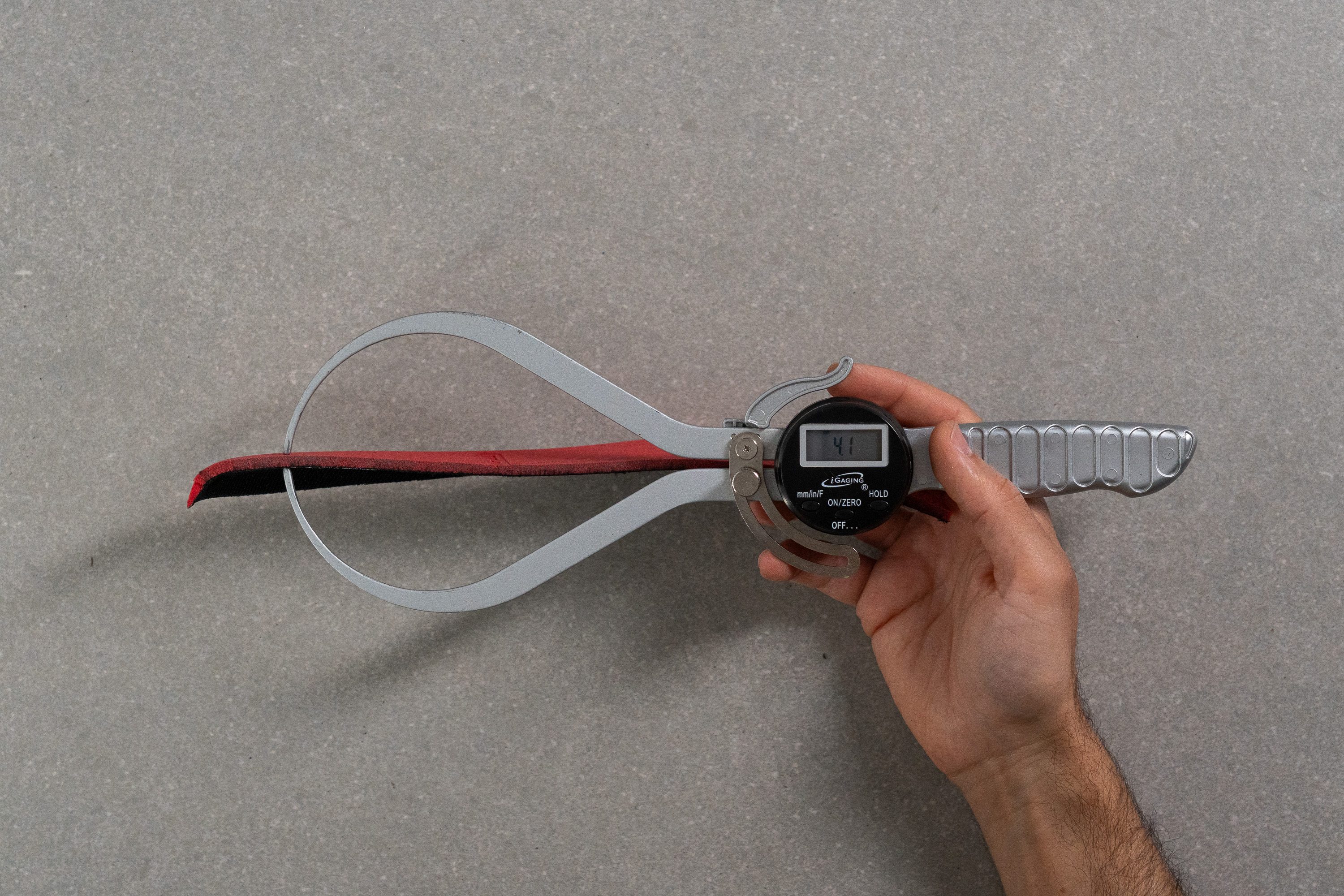
| Vectiv Fastpack Futurelight | 4.1 mm |
| Average | 5.3 mm |
Removable insole
The insole of the TNF Fastpack can be removed and replaced with a custom orthotic of your choice.

| Vectiv Fastpack Futurelight | Yes |
Midsole softness in cold (%)
Its resistance to low temperatures is another advantage of this superfoam from The North Face.
Having kept the Fastpack in the freezer for 20 minutes, its durometer reading only went up to 27.0 HA which is 10% firmer compared to the room temperature measurement. This means that you can enjoy a moderately soft ride even on a chilly day.
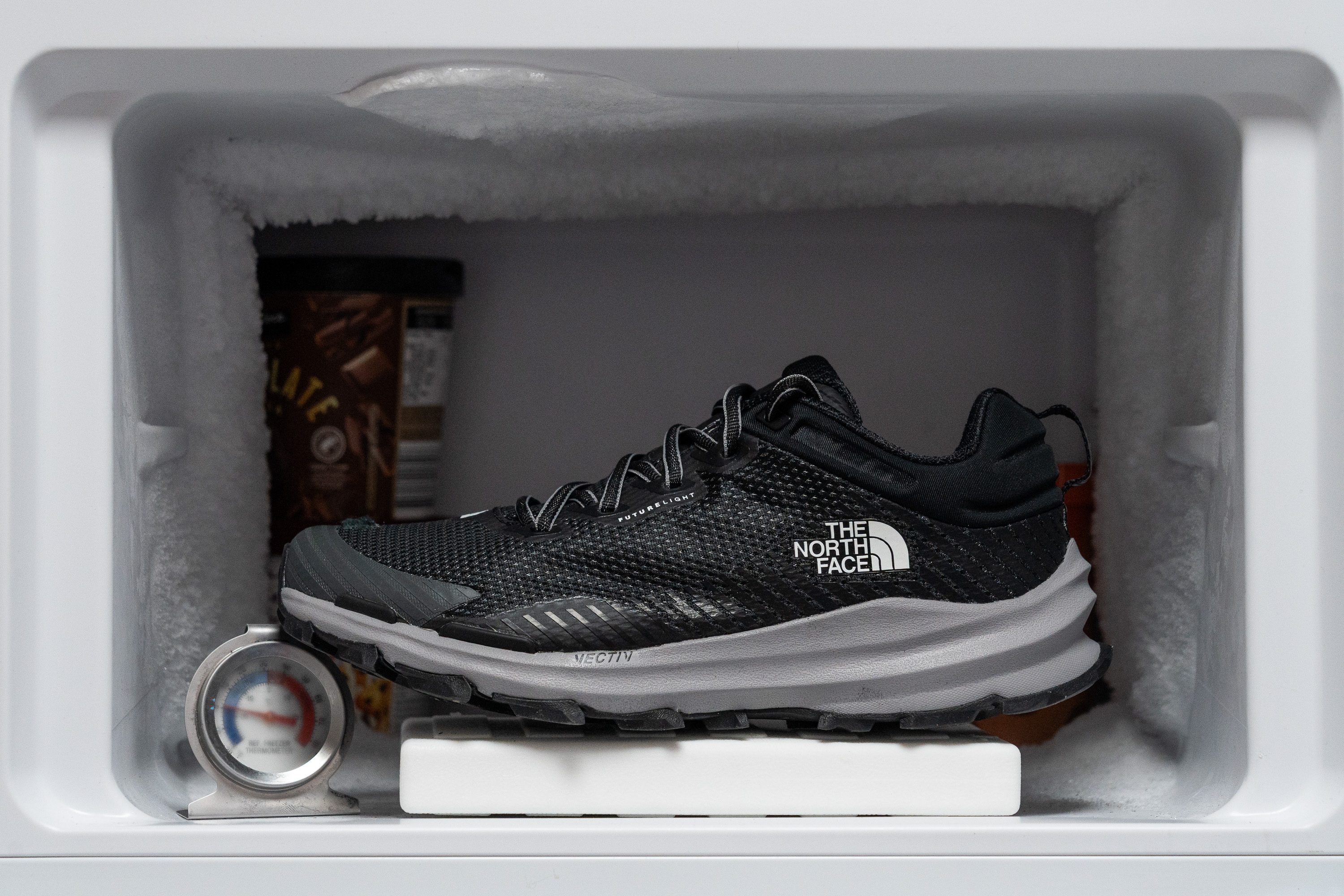
| Vectiv Fastpack Futurelight | 10% |
| Average | 19% |
Reflective elements
The shoe doesn't feature any reflective elements which makes it invisible in the dark.

| Vectiv Fastpack Futurelight | No |
Tongue padding
The Fastpack's internal padding is not the most abundant but it is generous for its lightweight design. Our caliper measured the shoe's tongue thickness at 8.7 mm which is nearly as much as the average hiking shoe provides.
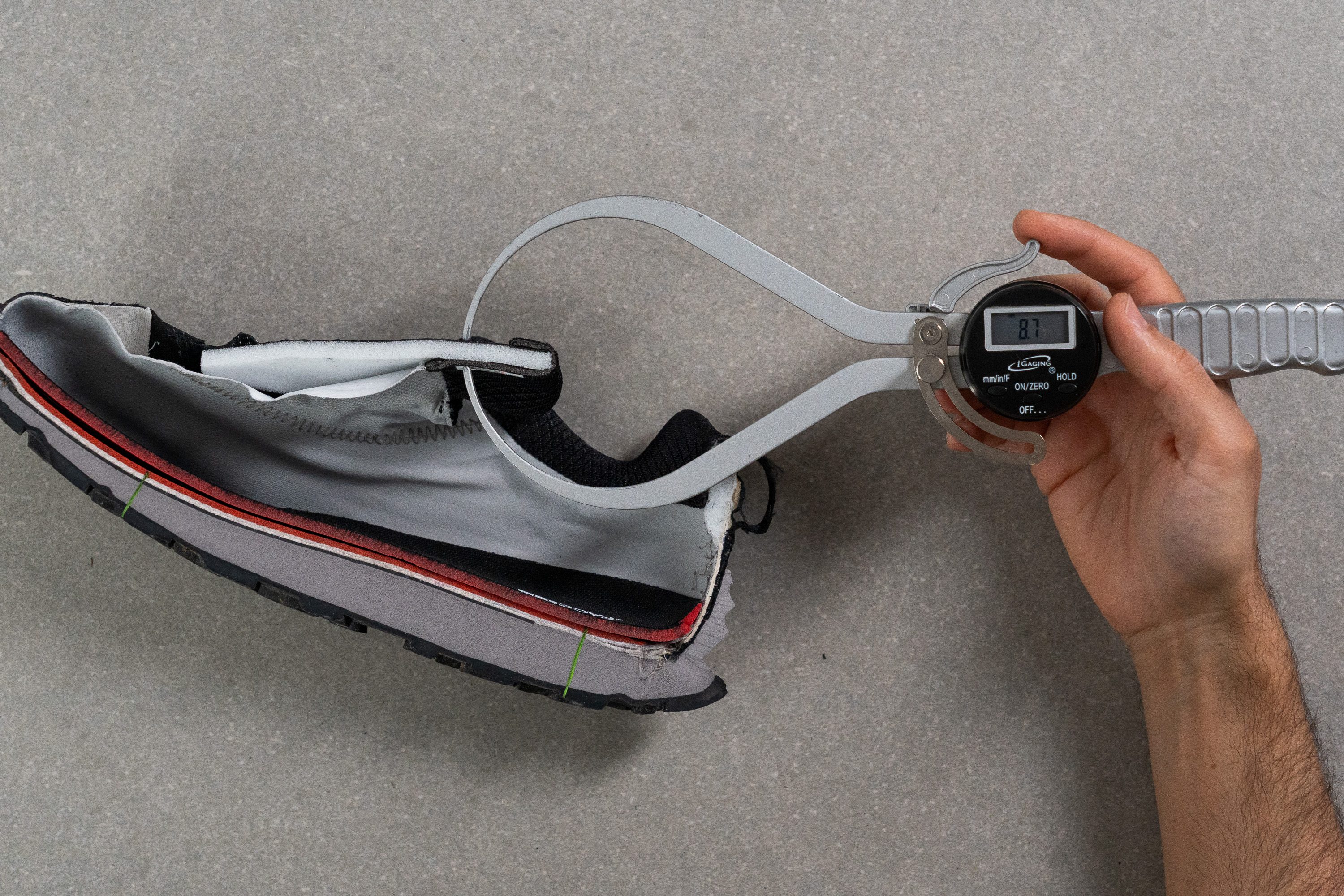
| Vectiv Fastpack Futurelight | 8.7 mm |
| Average | 10.2 mm |
Tongue: gusset type
The shoe's tongue is fully gusseted to enhance waterproofing and keep debris away from the interiors.
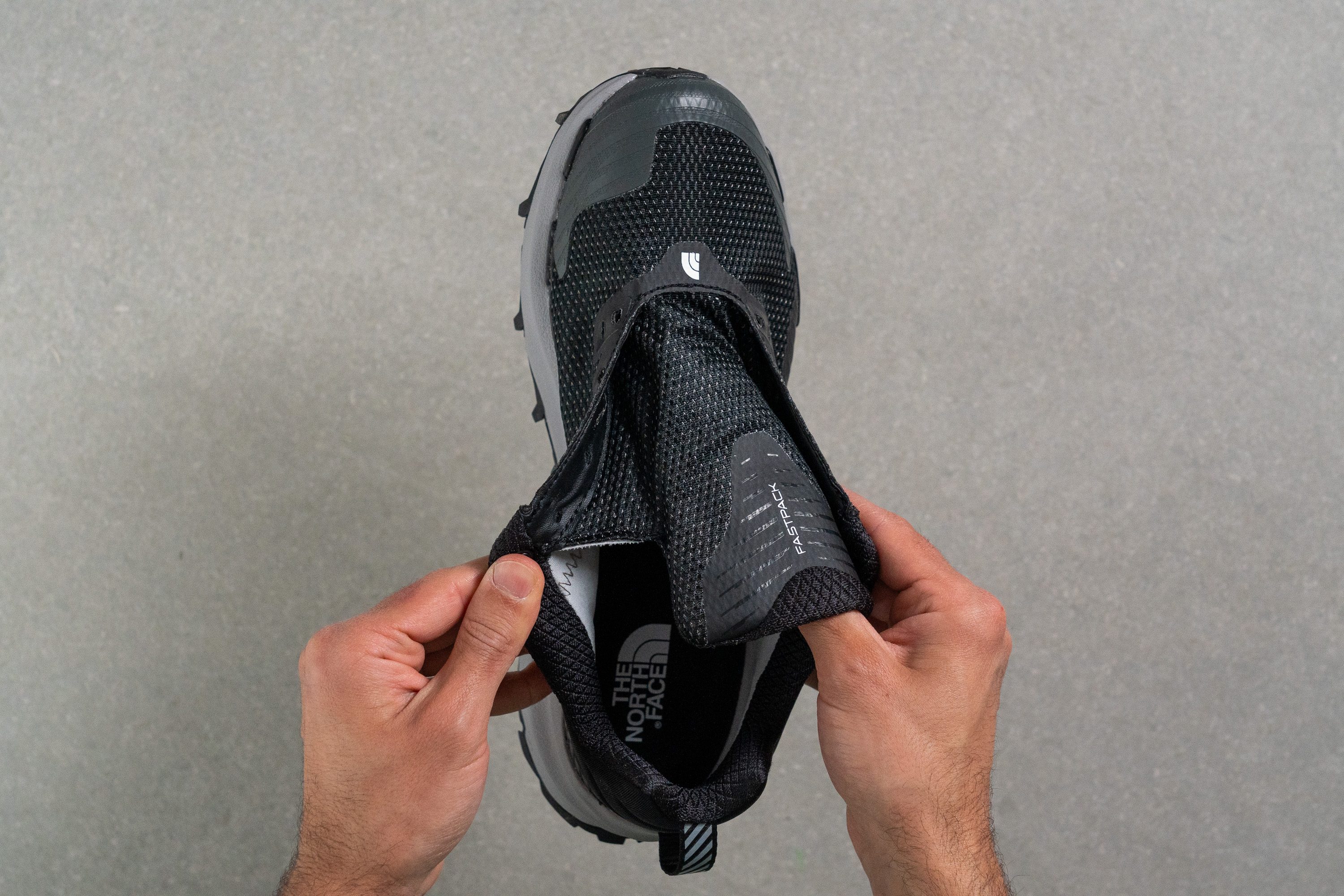
| Vectiv Fastpack Futurelight | Both sides (full) |
Price
The North Face Vectiv Fastpack Futurelight sits right in the middle of the hiking shoe price range. Because its lightweight and nimble construction is more similar to trail running shoes than to rugged hiking shoes, it makes sense that its price point is closer to that of the former.

| Vectiv Fastpack Futurelight | $150 |
| Average | $151 |
Heel tab
A large finger loop at the back is handy for slipping inside the shoe.
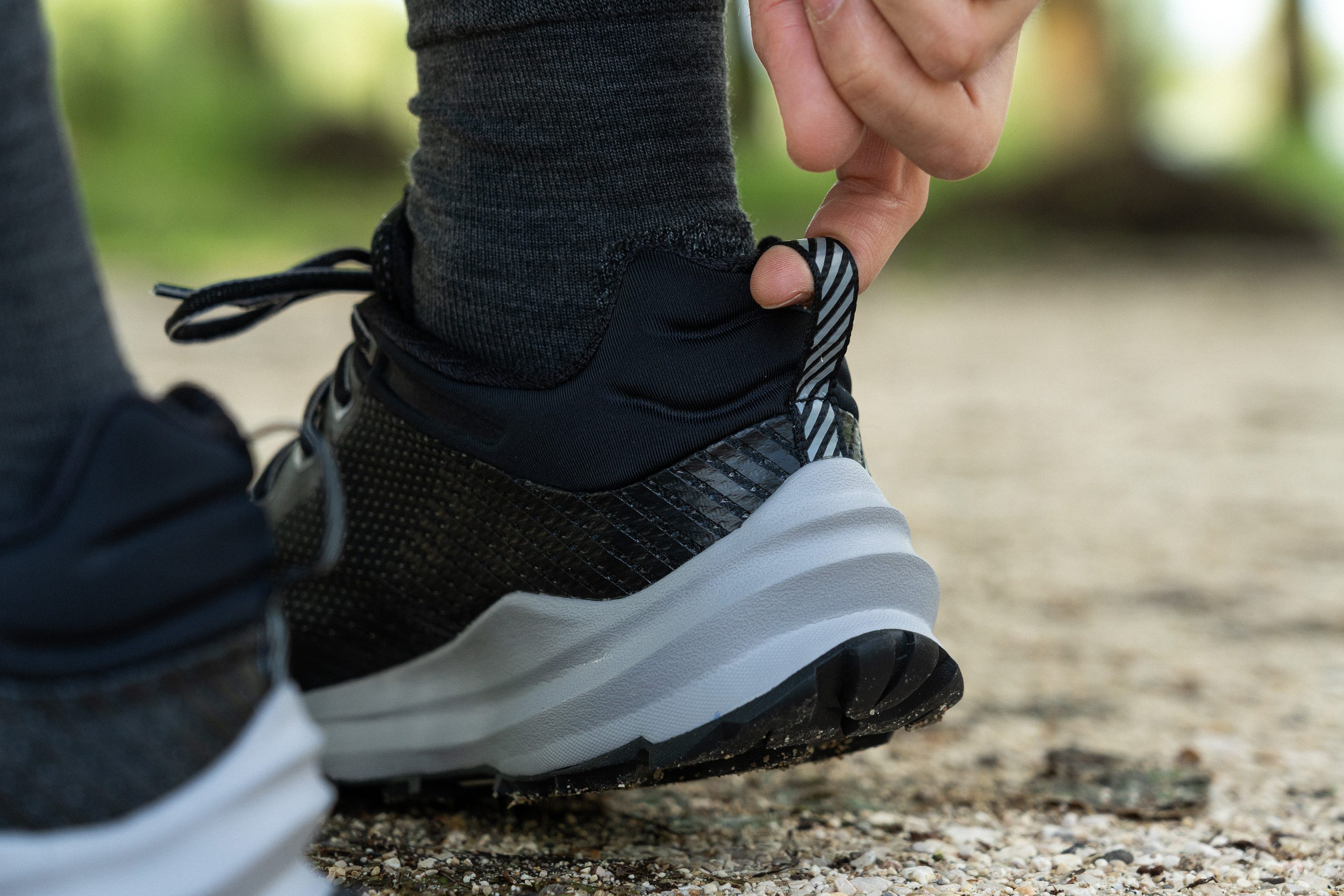
| Vectiv Fastpack Futurelight | Finger loop |
Laces
The shoe features double-punched eyelets which make the lace pressure more even throughout the instep.
